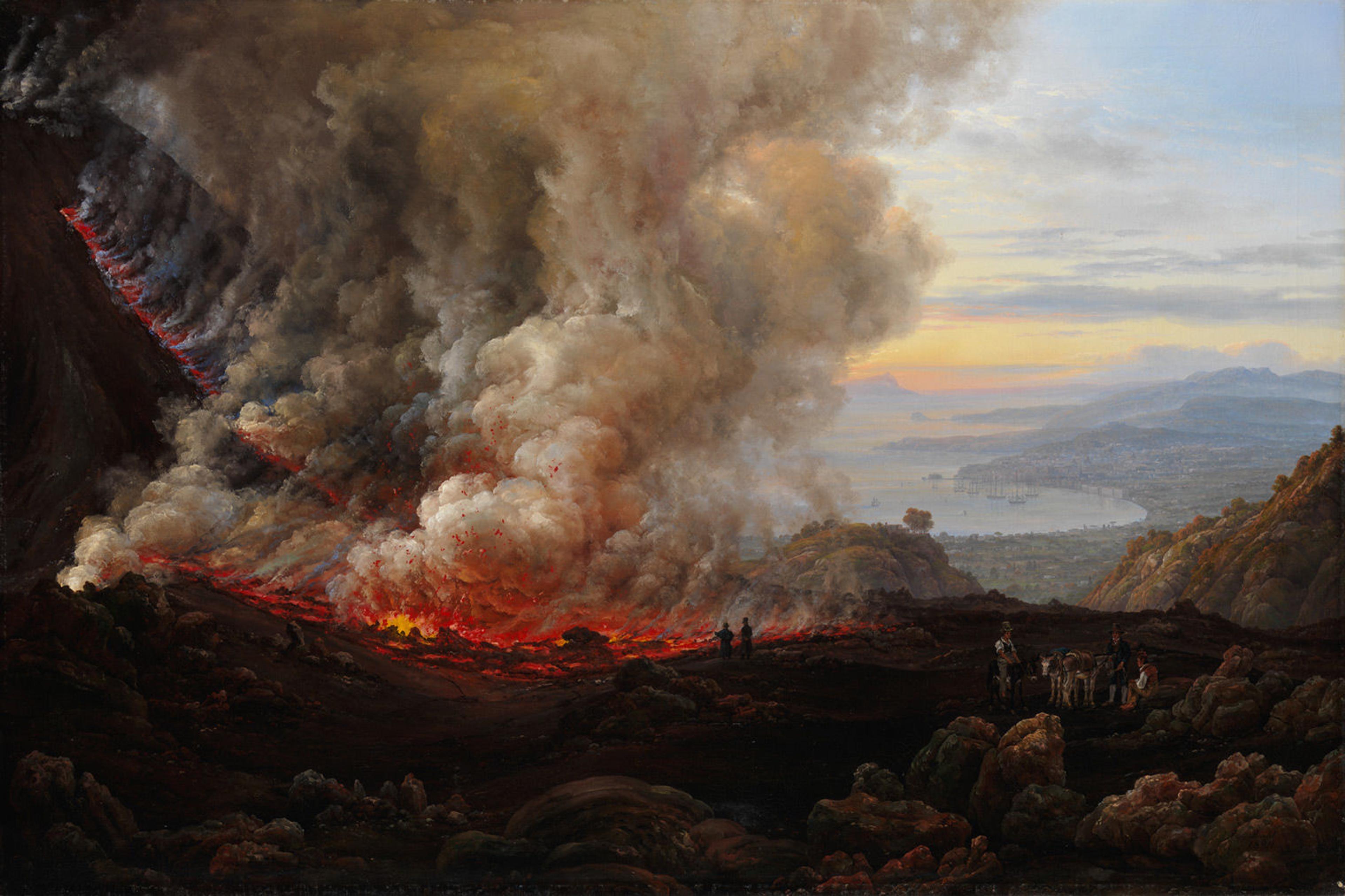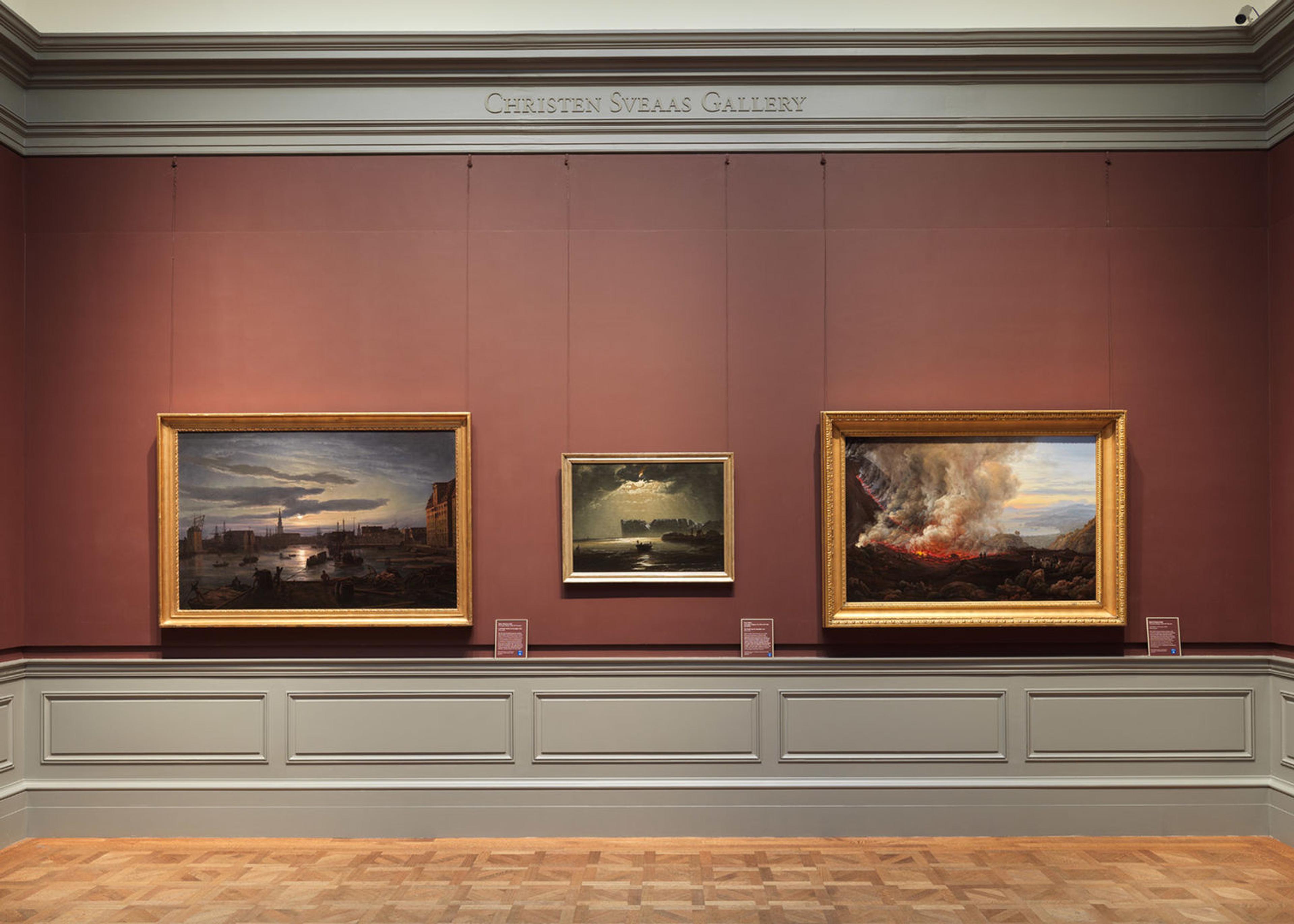
Installation view of the Christen Sveaas Gallery of Northern European Landscape Painting (gallery 807) at The Met, including three of the four paintings that Mr. Sveaas gifted to the Museum this year.
One aim of northern European painters in the early nineteenth century was to depict the Sublime—the grandeur of nature present in the haunting beauty of a moonlit night, the awesome power of an Alpine waterfall, or the fearsome display of an active volcano. For many years, visitors to The Met's gallery 807, where paintings by Norwegian painter Johan Christian Dahl (1788–1857) and his follower Peder Balke (1804–1887) are on display, have closely admired glorious paintings of these subjects. Four such works by these artists, long on loan to The Met, were given to the Museum this year by Norwegian collector and philanthropist Christen Sveaas, whose name now appears on the wall of the gallery, which he has just endowed.
The generosity and vision behind this major gift celebrating The Met's 150th anniversary cannot be overstated. The Christen Sveaas Gallery at The Met now displays the foremost representation of Northern Romantic paintings outside of Europe, and the collection has grown around these very pictures, ever since Mr. Sveaas first lent to the Museum in 1996.
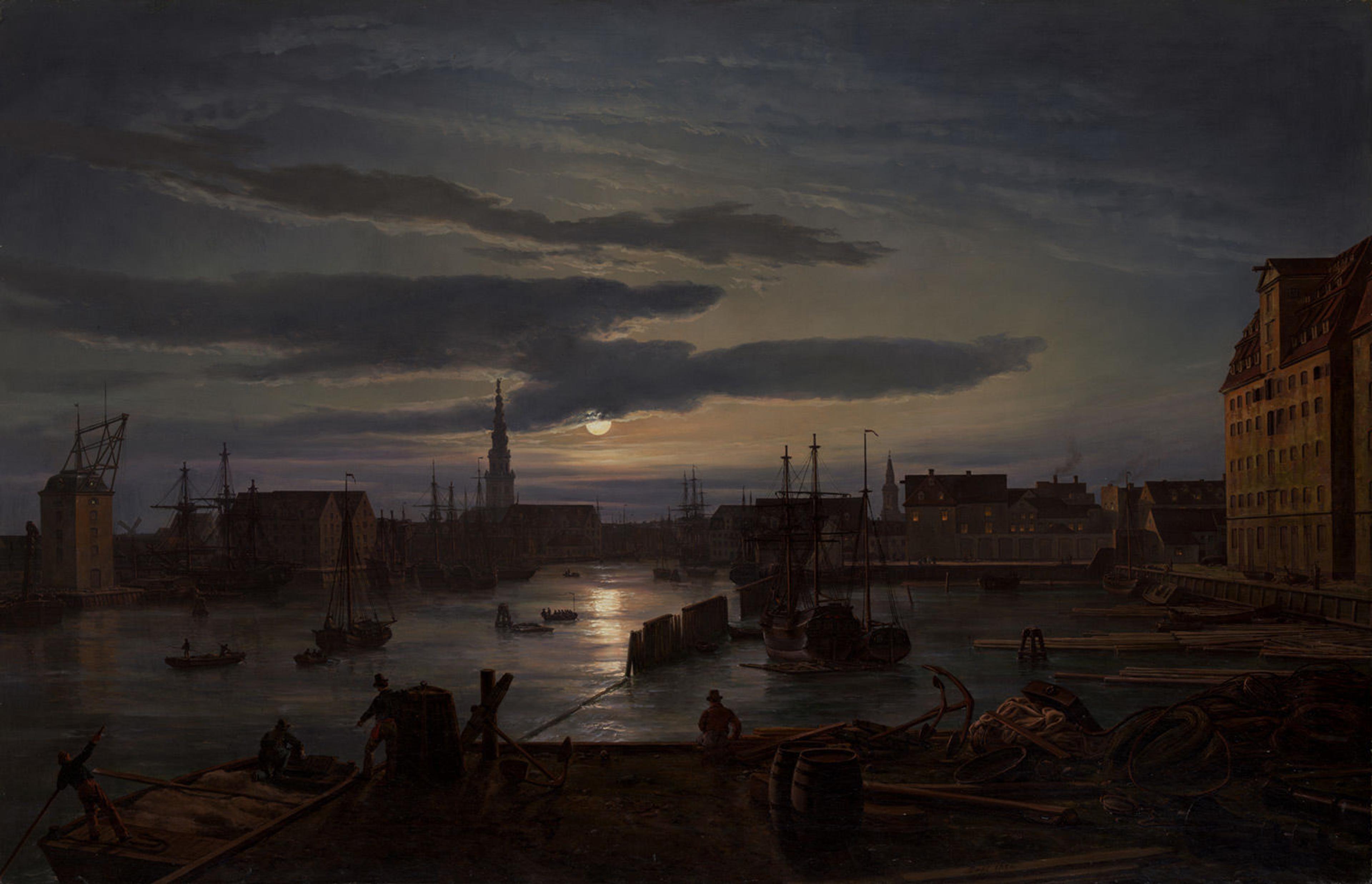
Johan Christian Dahl (Norwegian, 1788–1857). Copenhagen Harbor by Moonlight, 1846. Oil on canvas, 37 3/4 x 60 5/8 in. (95.9 x 154 cm). The Metropolitan Museum of Art, New York, Gift of Christen Sveaas, in celebration of the Museum's 150th Anniversary, 2019 (2019.167.2)
Dahl may not be a household name for American museumgoers, but the Norwegian painter was a leading international figure in his time. Setting out from his native country, he first studied in Copenhagen (illustrated above) and then moved to Dresden. There he became the upstairs neighbor of the leading German artist of the era, Caspar David Friedrich (1774–1840). Dahl paid homage to Friedrich in a painting that shows the two artists in front of a waterfall at sunset, amid mountain scenery. Though Dahl's painting is thought to have been based on a landscape near Dresden, the artist's contemporaries would have recognized the scene as prototypically "Norwegian" in its depiction of untamed wilderness. Both paintings show men seen from behind, a motif that invites us to see what they see, reinforcing our own relationship to nature.
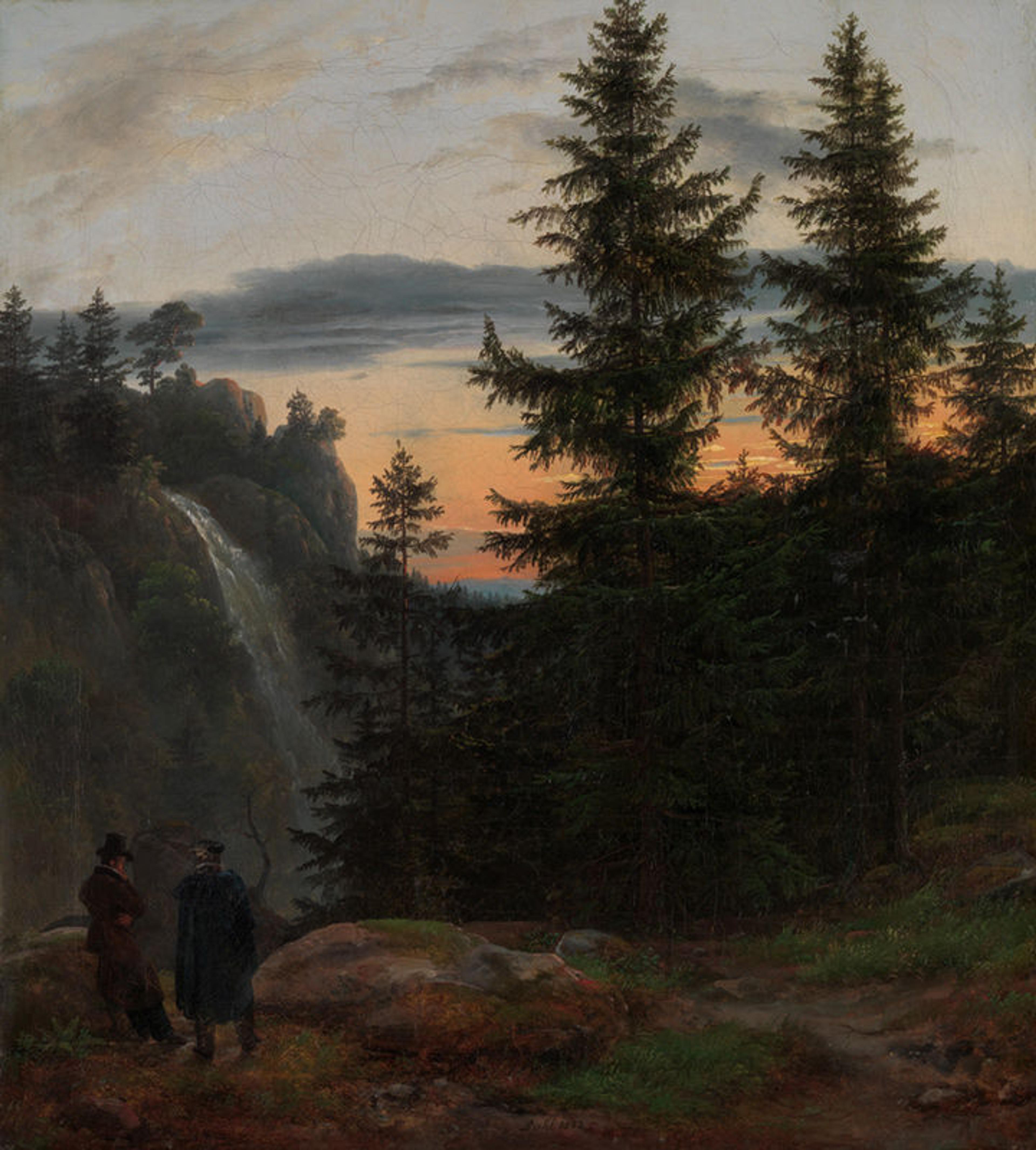
Johan Christian Dahl (Norwegian, 1788–1857). Two Men before a Waterfall at Sunset, 1823. Oil on canvas, 15 x 14 in. (38.1 x 35.6 cm). The Metropolitan Museum of Art, New York, Gift of Christen Sveaas, in celebration of the Museum's 150th Anniversary, 2019 (2019.167.3)
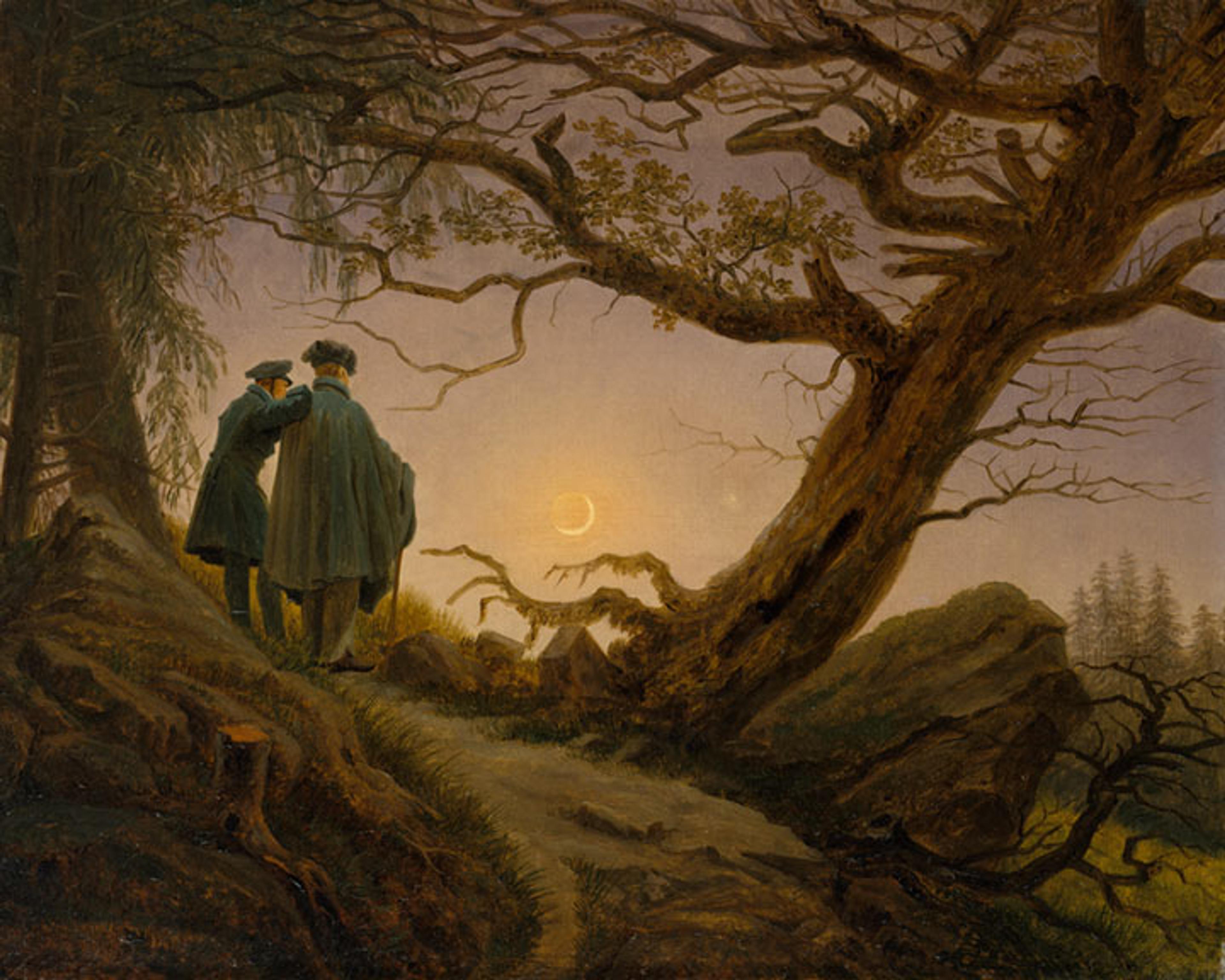
Caspar David Friedrich (German, 1774–1840). Two Men Contemplating the Moon, ca. 1825–30. Oil on canvas, 13 3/4 x 17 1/4 in. (34.9 x 43.8 cm). The Metropolitan Museum of Art, New York, Purchase, Wrightsman Fund, 2000 (2000.51)
Dahl's painting took inspiration from a composition by Friedrich, and a version of Friedrich's painting can be seen together with Dahl's, alongside masterpieces by their colleagues August Heinrich, Carl Gustav Carus, and Julius von Leypold. These artists expressed in their work a longing to connect with nature and the cosmos that was also present in Romantic poetry and music. Ludwig van Beethoven's Moonlight Sonata and Franz Schubert's song cycle Die Winterreise (Winter Journey) would be suitable accompaniments.
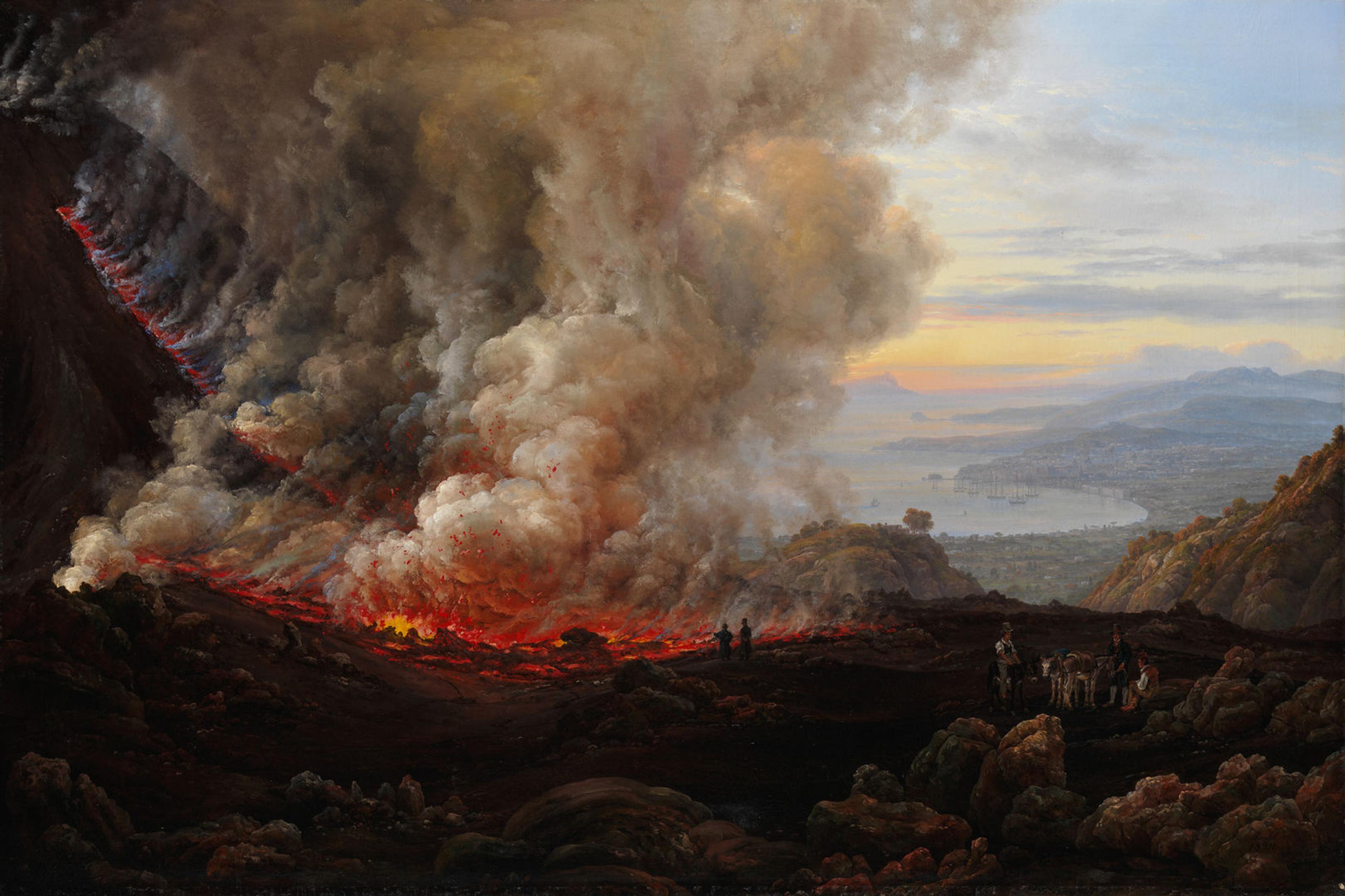
Johan Christian Dahl (Norwegian, 1788–1857). An Eruption of Vesuvius, 1824. Oil on canvas, 37 x 54 3/4 in. (94 x 139.1 cm). The Metropolitan Museum of Art, New York, Gift of Christen Sveaas, in celebration of the Museum's 150th Anniversary, 2019 (2019.167.1)
No less extraordinary is An Eruption of Vesuvius, the first painting by Dahl that Mr. Sveaas lent to The Met, and which is now part of the donor's gift. In 1820, the artist traveled to Naples as the guest of Prince Christian Frederik, later King Christian VIII of Denmark, and witnessed a Christmastime eruption of the volcano. In this majestic canvas, painted in 1824 for the prince himself, we get a close-up view of the fiery, steaming lava in Vesuvius' caldera—a scene that suggests the volcano's power, improbably juxtaposed against the placid, timeless vista of the Bay of Naples, with the island of Ischia on the horizon.
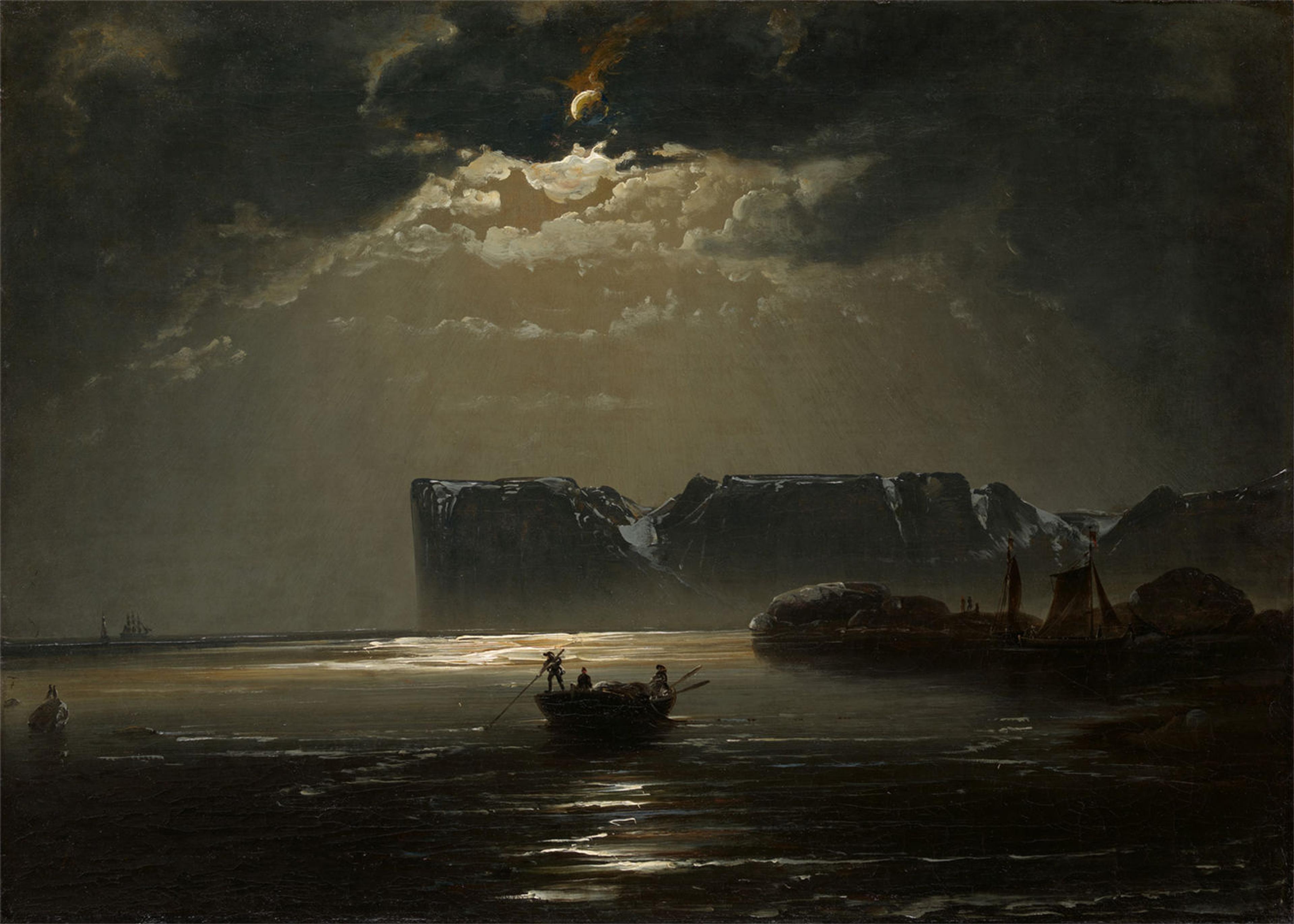
Peder Balke (Norwegian, 1804–1887 Oslo). The North Cape by Moonlight, 1848. Oil on canvas, 24 7/16 x 33 7/16 in. (62 x 85 cm). The Metropolitan Museum of Art, New York, Gift of Christen Sveaas, in celebration of the Museum's 150th Anniversary, 2019 (2019.167.4)
Dahl's reputation in continental Europe inspired a generation of Norwegian painters to follow in his footsteps, but none was as singular as Peder Balke, whose The North Cape by Moonlight is now the first painting by the artist to enter an American museum collection. Painted in 1848, a year of revolution and instability across Europe, it reflects the artist's memory of a prospect he saw only once, sixteen years earlier, from the deck of a ship. Faced with Balke's painting, it can be amazing to think that when he died, in 1887, he was utterly forgotten. Now, thanks to an act of visionary beneficence, Balke, Dahl, and their contemporaries are here to stay.
Related Content
Christen Sveaas's 2019 gift to The Met includes The North Cape by Moonlight, by Peder Balke, and Two Men before a Waterfall at Sunset, An Eruption of Vesuvius, and Copenhagen Harbor by Moonlight, by Johan Christian Dahl.
Learn more about The Met's 150th anniversary.
